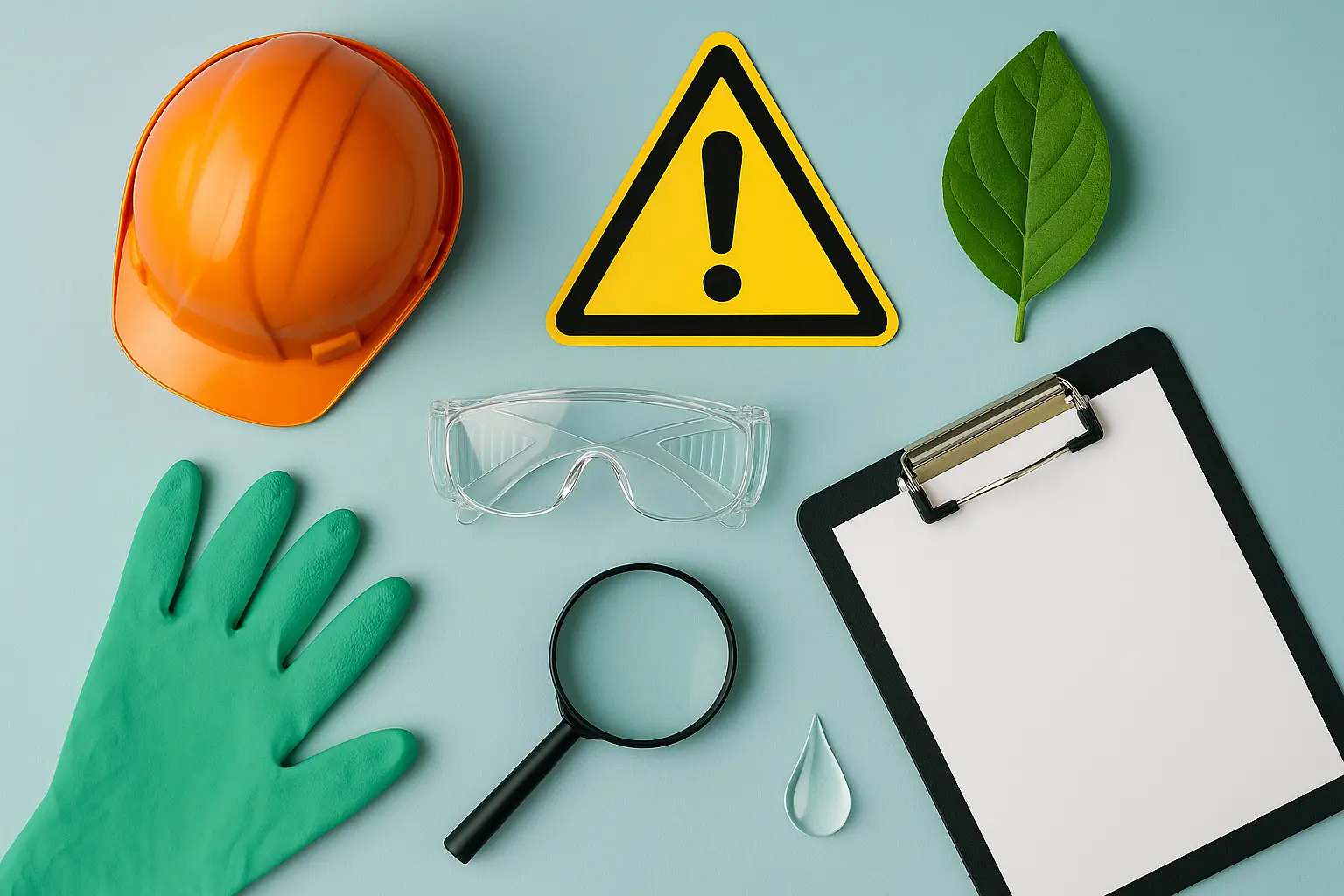Environmental Risk Assessment Certification
The Environmental Risk Assessment (ERA) certification is a critical component of environmental, health, and safety (EHS) management systems. It ensures that an organization identifies, evaluates, and mitigates potential risks to the environment arising from its operations or products. This certification is not only essential for regulatory compliance but also plays a pivotal role in safeguarding the environment while promoting sustainable practices.
Environmental risk assessments are conducted by qualified experts who use a structured approach to evaluate risks associated with various activities, such as waste management, energy use, and emissions. The assessment process typically involves several stages, including:
- Identification of potential environmental hazards
- Evaluation of the likelihood and severity of these hazards
- Determination of appropriate control measures
The ERA certification helps organizations to:
- Ensure compliance with relevant national and international standards, such as ISO 14001 for environmental management systems.
- Minimize the risk of legal penalties by identifying potential non-compliance issues early in the process.
- Increase operational efficiency through better resource utilization and waste reduction strategies.
- Promote a culture of sustainability within the organization, leading to improved stakeholder relations.
The ERA certification is particularly important for organizations operating in sectors such as manufacturing, construction, and energy, where environmental impacts can be significant. By obtaining this certification, companies demonstrate their commitment to responsible stewardship and sustainable practices.
In addition to regulatory compliance, the ERA process provides valuable insights into operational risks that may not be apparent through routine audits or inspections. This information is crucial for developing targeted mitigation strategies, thereby reducing potential environmental impacts.
The ERA certification also supports organizations in meeting their broader sustainability goals by providing a structured framework for continuous improvement. By regularly updating and refining the assessment process, companies can ensure they are always operating at the highest standards of environmental responsibility.
Why It Matters
The ERA certification is crucial in today's regulatory landscape where environmental compliance and sustainability are paramount. Regulatory bodies, such as the Environmental Protection Agency (EPA) and the European Union's Emissions Trading System (ETS), enforce stringent regulations to protect the environment from harmful activities.
Organizations that fail to comply with these regulations face severe penalties, including fines, legal actions, and reputational damage. By obtaining the ERA certification, organizations can:
- Avoid costly non-compliance fines
- Enhance their reputation as environmentally responsible entities
- Increase investor confidence by demonstrating commitment to sustainability
The ERA process also helps organizations identify and address potential risks before they escalate into larger issues. Early identification of environmental hazards allows for proactive management, reducing the likelihood of incidents that could result in significant financial losses.
Moreover, the certification fosters a culture of continuous improvement within the organization. By regularly reviewing and updating their risk assessments, companies can ensure they are always operating at the highest standards of environmental responsibility.
In summary, the ERA certification is not just about compliance; it's about demonstrating leadership in sustainability and protecting the environment for future generations.
Scope and Methodology
The scope of an Environmental Risk Assessment (ERA) depends on the specific activities or processes being evaluated. However, a comprehensive ERA typically includes several key components:
- Identification of Hazards: This involves identifying all potential environmental hazards associated with the organization's operations.
- Evaluation of Risks: Once identified, each hazard is evaluated for its likelihood and severity. This helps in prioritizing risks based on their potential impact.
- Determination of Controls: Appropriate control measures are implemented to mitigate or eliminate the identified hazards.
The methodology used in an ERA can vary depending on the specific requirements of the organization and the sector it operates in. However, most ERA processes follow a structured approach that includes:
- Data Collection: Gathering relevant data through site visits, interviews with staff, and review of existing documentation.
- Hazard Identification: Identifying all potential hazards using tools such as checklists and brainstorming sessions.
- Risk Assessment: Evaluating the identified hazards to determine their likelihood and severity. This is often done using risk matrices or similar tools.
- Mitigation Planning: Developing strategies to mitigate or eliminate the identified risks. These plans are documented in a risk management plan (RMP).
The ERA process should be conducted by qualified professionals who have expertise in environmental science and engineering. They use advanced tools such as geographic information systems (GIS) and environmental modeling software to ensure accurate assessments.
Once the ERA is complete, the results are documented in a report that includes recommendations for improvement. This report serves as a valuable tool for decision-makers within the organization, helping them make informed choices about resource allocation and operational practices.
International Acceptance and Recognition
- ISO 14001: Organizations certified under ISO 14001 are required to conduct environmental risk assessments as part of their management systems.
- European Union Emissions Trading System (EU ETS): Companies involved in emissions trading must comply with stringent environmental assessment protocols that include ERA processes.
- United Kingdom Environmental Audit Regulations: The UK has specific regulations requiring organizations to conduct regular environmental risk assessments and report their findings to relevant authorities.
- Australian National Environment Protection Council (NEPC): Australian organizations must comply with NEPC guidelines, which include requirements for environmental risk assessments.
The ERA certification is widely recognized across the globe. Many multinational companies prioritize obtaining this certification as it demonstrates their commitment to sustainable practices and compliance with international standards. Organizations that achieve this certification often find themselves in a better position to compete globally and attract investment from environmentally conscious stakeholders.
Furthermore, countries like Canada, New Zealand, and Singapore have implemented policies requiring organizations to conduct environmental risk assessments as part of their regulatory frameworks. This highlights the growing importance of ERA processes in ensuring sustainable development worldwide.





